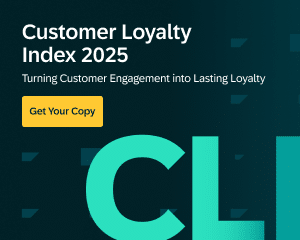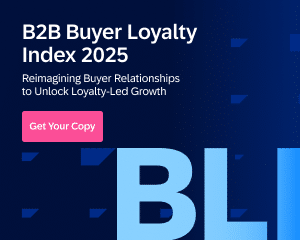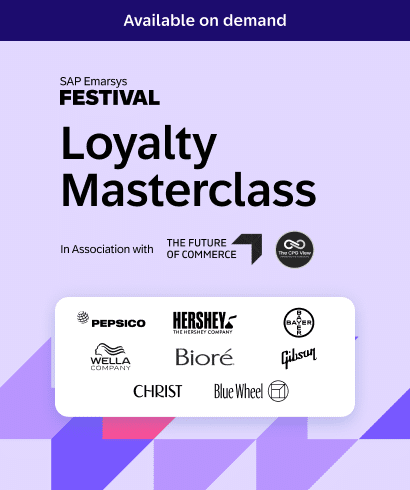Marketers today are under more pressure than ever to prove impact. With rising acquisition costs, shrinking attention spans, and increasingly fragmented customer journeys, traditional metrics like open rates or click-throughs no longer tell the full story.
In 2025, successful brands are shifting their focus from isolated campaign performance to long-term customer value. They’re tracking the signals that really matter—metrics that reflect not just what customers do, but what they feel, need, and expect.
This shift isn’t just about better data. It’s about better decisions. By adopting smarter, AI-powered engagement metrics, marketers can:
- Understand which customers are most valuable (and why)
- Predict churn before it happens
- Deliver relevant, real-time experiences across every channel
In this article, we’ll break down the advanced engagement metrics leading brands are using to stay ahead—from Customer Lifetime Value and NPS to engagement rate and retention. We’ll also show you how Emarsys helps you measure, act, and grow—all from one platform.
Let’s dive in.
1. Customer Lifetime Value (CLV): Your Most Strategic Metric in 2025
Not all customers are created equal—and treating them like they are can cost you.
Customer Lifetime Value (CLV) helps you understand which customers are truly driving your business forward. It’s the total revenue you can expect from a customer over the course of their relationship with your brand—and in 2025, it’s one of the smartest metrics you can track.
Why CLV is essential now
Focusing on one-time purchases or campaign-level metrics may offer quick wins, but it doesn’t give you the full picture. CLV shows you:
- Which segments bring in the most value
- Where to focus your acquisition and retention efforts
- How to allocate marketing budget more effectively
In a world of rising CAC (Customer Acquisition Costs), doubling down on high-value customers isn’t just smart—it’s necessary.
Predictive CLV: Smarter, faster decisions with AI
With Emarsys, you don’t have to guess which customers are worth investing in. You can use AI and predictive analytics to:
- Forecast future spend based on past behavior
- Identify churn risks before it’s too late
- Tailor campaigns to high-LTV segments with precision
You can even build dynamic CLV models that factor in browsing data, purchase frequency, demographics, and more—no spreadsheet wizardry required.
How to turn CLV insights into action
Here’s how Emarsys customers are putting CLV to work:
- Segment strategically: Identify your most profitable segments and create personalized journeys just for them—think tailored product bundles, VIP access, or exclusive loyalty rewards.
- Prioritize retention: Use lifecycle triggers to re-engage customers at risk of dropping off before they churn.
Invest where it counts: Shift spend from low-return campaigns to those proven to increase average order value or drive repeat purchases.
💡 Tip: Even a small boost in retention (5%) can increase profits by 25–95%. CLV helps you spot where those improvements are possible.

2. Net Promoter Score (NPS): From Simple Score to Strategic Growth Driver
Net Promoter Score (NPS) is one of the most well-known customer engagement metrics—and for good reason. It gives you a quick read on how likely your customers are to recommend your brand to others. But in 2025, it’s not just about the score. It’s about what you do with it.
Why NPS still matters in 2025
Word-of-mouth remains one of the most powerful growth levers, especially in a world where trust in ads is low and customer expectations are high. A strong NPS doesn’t just reflect happy customers—it signals a scalable path to organic growth.
But NPS isn’t a static number. Customer sentiment can shift quickly after a late delivery, a poor support interaction, or even a glitchy mobile experience. That’s why leading brands now use real-time NPS tracking to stay ahead of issues—and act before small problems snowball.
Turning feedback into action with AI
Using SAP Emarsys, marketers can combine real-time feedback with AI-driven insights to:
- Spot trends early—before they impact retention or revenue
- Identify common friction points across the journey
- Automate follow-ups to close the loop with unhappy customers
By integrating NPS surveys across channels—email, web, mobile—you get a more complete picture of how customers feel, when it matters most.
How to move from detractors to promoters
Your most valuable insights often come from your most dissatisfied customers. Here’s how to use NPS to drive meaningful improvements:
- Respond fast: Acknowledge feedback quickly. Even a simple “We hear you” can go a long way in rebuilding trust.
- Follow up personally: Offer tailored incentives, proactive support, or exclusive content to turn negative experiences around.
- Close the loop internally: Share NPS insights across marketing, product, and customer service teams to address systemic issues.
💡 Promoters are more than happy customers—they’re your best marketers. Use NPS to identify them, then reward and empower them to spread the word.
3. Customer Satisfaction Score (CSAT): Understand the Experience Behind Every Interaction
Customer Satisfaction Score (CSAT) is one of the most direct ways to measure how happy your customers are with a specific product, service, or interaction. It’s simple, scalable—and in 2025, smarter than ever.
Why CSAT is still essential
While it’s been around for years, CSAT has evolved beyond a single post-purchase survey. Today, it’s about capturing context-rich, real-time feedback across the entire customer journey—and using it to drive continuous improvement.
Marketers and CX teams use CSAT to:
- Identify friction points in specific channels or stages
- Validate whether recent updates improved the customer experience
- Track satisfaction trends over time across different segments
Go deeper with AI-powered sentiment and smart feedback loops
Modern CSAT tools now go beyond numbers. They analyze open-text responses, social mentions, and behavioral data to uncover what’s behind the score—and what to do about it.
With SAP Emarsys integrations, you can:
- Collect feedback across all your owned channels using partners like Zenloop and Triggerbee
- Trigger personalized follow-up messages based on satisfaction levels
- Align feedback insights with campaign or product improvements
💡 A “7/10” might seem fine—but when paired with sentiment analysis, it could reveal dissatisfaction hiding behind politeness.
How to act on CSAT insights
- Respond immediately: Let customers know their feedback is seen. Even an automated “Thank you” builds goodwill.
Share insights across teams: Marketing, product, and support should all have access to CSAT data—because satisfaction is everyone’s job. - Close the loop with automation: Route negative feedback into automated workflows that offer apologies, support, or incentives—without manual work.
By turning raw satisfaction data into targeted actions, you don’t just measure experience—you improve it.

4. Churn Rate: Predict and Prevent Customer Loss Before it Happens
Churn rate tells you how many customers stop doing business with you over a given period. And in today’s fast-moving, subscription-driven economy, churn isn’t just a performance indicator—it’s a warning signal.
Why churn is a critical engagement metric
Customers have more choice, more power, and less patience than ever before. They’ll switch brands over a single bad experience—or even just a better offer. If you’re not actively monitoring churn risk, you’re leaving revenue on the table.
In 2025, churn is no longer a lagging indicator. With the right tools, you can use engagement data to spot who is likely to leave—and why—before it happens.
Predictive AI helps you spot churn before it’s too late
Emarsys customers use AI-powered churn models to identify early warning signs, such as:
- Declines in email opens or site visits
- Fewer repeat purchases
- Reduced time spent across key touchpoints
This predictive insight allows marketers to trigger personalized re-engagement campaigns at the exact moment customers begin to drift—automatically.
One example: BrandAlley used SAP Emarsys to shift from reactive to proactive retention marketing. The result?
- +24% of likely-to-churn customers reactivated
- +10% increase in average order value
💡 When churn is predicted early, you can retain more customers without increasing your budget.
Strategies to reduce churn and keep more customers
- Segment and re-engage at-risk customers: Use predictive segmentation to identify customers showing signs of disengagement and tailor your message to remind them of your value.
- Incentivize returns: Send targeted offers, loyalty points, or product recommendations to re-capture attention.
- Listen and adapt: Use surveys, feedback forms, or sentiment analysis to uncover why customers are leaving—and adjust your strategy accordingly.

5. Engagement Rate: Measure Real Connection Across Channels
Engagement rate tracks how actively customers are interacting with your brand—whether they’re clicking, browsing, sharing, or spending time with your content. But in 2025, it’s not just about likes or clicks. It’s about connected, cross-channel experiences.
Why engagement needs a multi-channel mindset
Today’s customer might start on Instagram, browse your site on mobile, and complete a purchase in-app or via email. If you’re only measuring engagement on a single channel, you’re missing most of the picture.
A high engagement rate signals relevance. It shows that your content, offers, and experiences are landing with the right people, at the right time.
Personalization at scale with AI
Using SAP Emarsys, you can build personalized content once—and deploy it across every channel using real-time data and AI-powered tokens. That means less manual effort, more tailored experiences, and higher engagement across the board.
Here’s how brands are using engagement insights to drive action:
- AI-driven segmentation: Group customers based on behaviors, preferences, and recency of interaction.
- Dynamic content blocks: Show different products, CTAs, or offers based on real-time activity.
- Predictive product recommendations: Increase relevance by using past behaviors to suggest what’s next.
💡 The more relevant the experience, the more likely the customer is to engage—and convert.
Tactics to increase engagement
- Interactive content: Use polls, quizzes, or dynamic email elements to encourage active participation.
- Personalized timing and frequency: Let AI optimize when and how often messages are sent based on individual behavior.
- Omnichannel consistency: Ensure the experience feels seamless from one touchpoint to the next—email to web, web to mobile, and beyond.
In short: engagement isn’t a vanity metric. It’s a real-time signal of interest and intent—and a key driver of conversion, retention, and revenue.
6. Conversion Rate: Turn Interest Into Action (And Revenue)
Conversion rate measures how effectively your marketing turns intent into action—whether that’s a purchase, a sign-up, or a product page view. It’s the ultimate performance metric, and in 2025, it’s getting a major upgrade.
Why conversion rate optimization is evolving
Gone are the days when A/B testing a subject line or button color was enough. Today, conversion is about understanding behavior in real time, personalizing every touchpoint, and responding dynamically to customer signals.
The more relevant and seamless the experience, the higher your conversion rates. And with rising customer expectations, anything less feels like friction.
Personalize every step with AI-powered optimization
With SAP Emarsys, marketers can use automation and AI to tailor content, timing, and offers—automatically—across the entire customer journey.
Key conversion-boosting capabilities include:
- Predictive product recommendations based on browsing or purchase behavior
- Dynamic pricing and offers triggered by cart activity or past spend
- Real-time abandonment flows to re-engage hesitant shoppers with personalized incentives
💡 Think beyond the purchase. A conversion could also be an app download, newsletter signup, or loyalty opt-in—whichever action drives value for your business.
What high-converting brands do differently
Take PUMA, for example. After implementing SAP Emarsys, they moved from a one-size-fits-all newsletter strategy to a fully segmented, data-driven approach—resulting in:
- 5x revenue growth
- 10x increase in weekly subscribers
By creating more relevant journeys at every stage—from welcome emails to reactivation campaigns—they turned more moments of interest into measurable outcomes.
7. Retention Rate: Build Sustainable Growth By Keeping Customers Coming Back
Acquiring new customers is important—but retaining them is what drives real, long-term growth. Retention rate measures how well you’re holding onto the customers you’ve already won—and in 2025, it’s a critical performance indicator.
Why retention matters more than ever
As acquisition costs rise and competition intensifies, keeping existing customers engaged is both more efficient and more profitable. Studies consistently show that returning customers:
- Spend more over time
Convert at higher rates - Are more likely to become brand advocates
In other words, your current customers are your growth engine—if you know how to keep them.
Loyalty and lifecycle strategies that scale
With SAP Emarsys, marketers can go beyond generic retention efforts. You can build tailored loyalty experiences that reward repeat behavior, recognize customer milestones, and re-engage lapsed audiences automatically.
Here’s what that looks like in practice:
- Omnichannel loyalty programs that adapt based on customer behavior
- Tiered incentives (e.g., silver, gold, platinum) to drive progression and exclusivity
- Lifecycle-triggered campaigns that keep the experience relevant from first purchase to brand loyalty
💡 Retention isn’t a one-time campaign. It’s an always-on strategy that adapts to each customer’s journey in real time.
How top brands boost retention with automation
Retailer AO used SAP Emarsys to transform its retention strategy. By aligning segmentation, automation, and loyalty, they achieved:
- +150% newsletter engagement
- +14% opt-in database growth
- +12% average order value
- 45% of total revenue driven by automation
That kind of growth doesn’t come from one-off emails—it comes from building a marketing engine that knows, remembers, and rewards every customer.
Final Thoughts: Redefining Success With Smarter Metrics
In 2025, if you want to win at marketing, you need to go beyond merely tracking performance – you need to understand it. That means moving beyond outdated metrics like opens or clicks, and toward deeper, more actionable engagement data.
Customer Lifetime Value, NPS, churn, CSAT, engagement, conversion, retention—each of these metrics offers a different lens on the customer experience. But when combined, they create a powerful, full-picture view of what’s working, what’s not, and where to focus next.
With the right tools and insights, marketers can:
- Build stronger relationships with high-value customers
- Act early on warning signals like churn or low satisfaction
- Deliver more relevant, personalized experiences at scale
And that’s exactly what SAP Emarsys helps you do.
Ready to level up your engagement strategy?
Whether you’re just starting to shift your metrics strategy or looking to optimize what’s already in place, Emarsys gives you the AI-powered tools to track what matters—and turn insights into action.
👉 Explore our latest resources to build smarter loyalty programs, enhance retention, and drive sustainable growth with data-backed customer engagement.







